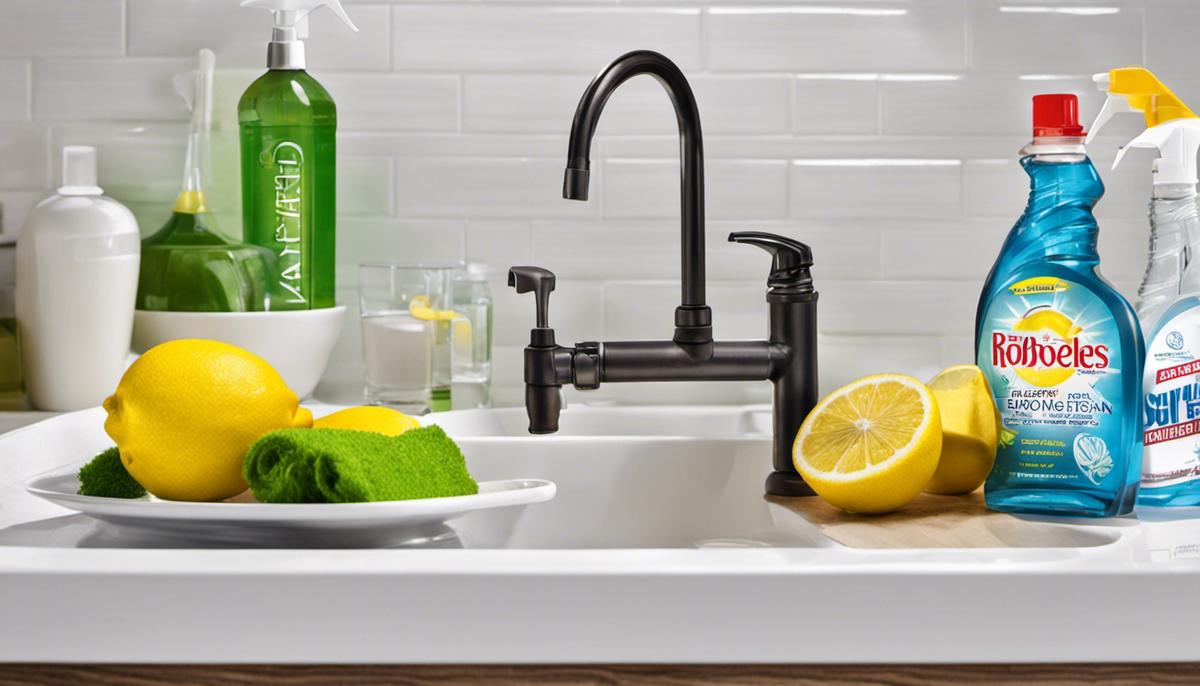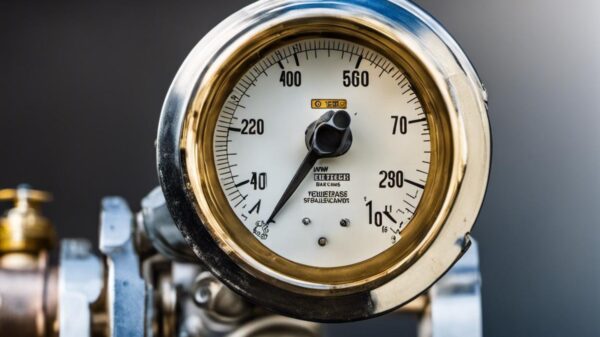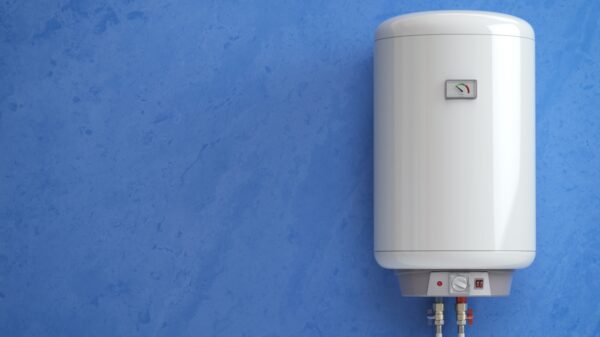Keeping a white sink clean and free from stains is a task that requires knowledge, preparation, and consistency. Dive into an enlightening journey towards understanding the necessary cleaning materials ideal for maintaining the shining whiteness of your sink. Traverse through different cleaning materials like baking soda, vinegar, and lemon, each boasting unique properties that contribute to their effectiveness in preserving the original colors and cleanliness of your sink. Venture into the easy-to-follow, chronological process of cleaning a white sink. These comprehensive steps –from wetting your sink, applying the cleaning materials, to scrubbing and rinsing- would empower you to maintain your sink’s spotless condition. Finally, get equipped with potent maintenance practices, some little-known yet remarkably effective tasks that assure the sustained whiteness of your sink, including techniques for immediate stain removal, regular cleaning routines, and the use of gentle cleaning agents.
Understanding Necessary Cleaning Materials
Cleaning and Stain Removal from White Sinks: A Homemaker’s Guide
It’s natural to be alarmed when you see stains on your pristine white sink. A white kitchen or bathroom sink can indeed look fabulous, but keeping it that way might feel like a full-time job.
But don’t fret – with the right tools and a little elbow grease, those stains can be gone in no time and your sink will be back to shining brighter than ever. This handy guide is going to help with exactly that. Here’s what you need to get started.
Materials Required:
- Baking Soda
The ever-faithful baking soda doesn’t just elevate your homemade cookies, it’s squatting in your pantry ready to become a hero in sink stain removal! Lovably natural and wonderfully abrasive, it’ll chomp down on those pesky stains without damaging your sink.
- White Vinegar
Isn’t it wonderful how things lying around your home, like vinegar, suddenly become stain-fighting, sparkle-boosting superheroes? A little vinegar goes a long way in stain removal.
- Soft Cloth or Sponge
A soft cloth or sponge will be your partner in crime, helping to scrub away any stubborn marks while ensuring your sink doesn’t get scratched.
- Cream of Tartar
As strange as it may sound, cream of tartar, commonly used in baking, is great for removing stains from white sinks. Paired with hydrogen peroxide, you can make a stain-removing paste that works wonders.
- Hydrogen Peroxide
This mild bleaching agent is perfect for stain removal. Together with cream of tartar, it’ll turn your stained sink into a beacon of cleanliness.
- Toothbrush
Think about it – toothbrushes clean stains from your teeth, so why not your sink? This small but mighty tool can help you reach and scrub every crevice.
Now that you’re armed with these tools, let’s declare war on those stains! Start by layering baking soda over the stained area, followed by white vinegar. Let the magic combination foam. Use your soft cloth or sponge to gently scrub away the stains.
For more stubborn marks, combine cream of tartar and hydrogen peroxide to create a paste, apply it over the stains, and let it sit for a few minutes. Then scrub it off using a toothbrush or sponge.
Through all this, remember that consistency is key. These methods should help keep your white sinks sparkling, but remember to clean them regularly to avoid build-up of stains. After all, a clean sink leads to a happy home.
Happy cleaning!
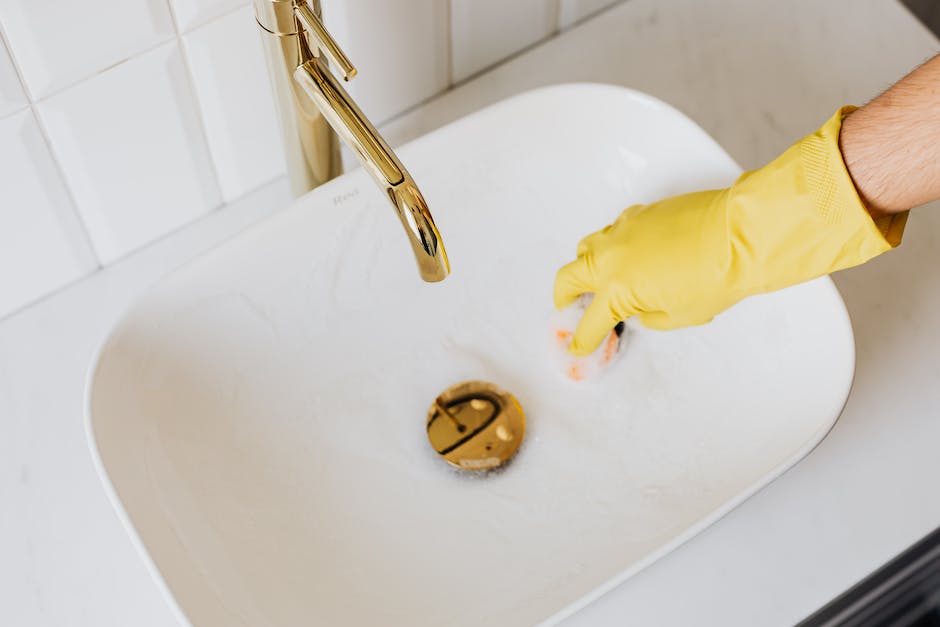
Step-by-Step Cleaning Process
The Art of Maintaining a Sparkling White Sink: Mastering the Stain Removal Process
So you’ve got your baking soda and white vinegar at the ready? Good! Don’t worry about writing this down, dear reader, we’ve got you covered. And since we’ve already talked about the fantastic cleaning power of these ingredients, let’s get straight to how you can implement the process effectively, shall we?
Before we start, it’s essential to understand the correct sequence to tackle those tough stains. The order of operations can really make a difference in the stain removal outcome.
Using baking soda first forms the foundation of our process. Sprinkle it liberally over the strained areas, then follow up with some white vinegar. Rest assured, the bubbling reaction is a good sign! It’s the mighty duo working their magic to break down the stains. Wait a wholesome 15-20 minutes, allowing the mixture to fully penetrate the stain.
Now, pull out that soft cloth or sponge you’ve set aside earlier. Gently scrub in a circular motion – and a soft touch is key here! We don’t want to scratch our lovely sink in the process of cleaning it.
On stubborn stains, it’s time to bring in the reinforcements: the underappreciated household hero, cream of tartar. Apply the cream of tartar as a paste, letting it sit for 30 minutes, before moving on to the next step. Trust us, seeing those stubborn stains vanish will be such a treat!
Believe it or not, hydrogen peroxide is also in our toolkit for battling stains! Applied to a cloth, it should be lightly rubbed over the stains. Let it sit for half an hour then rinse with warm water. Hydrogen peroxide acts as a bleacher, bringing back the sink’s original brilliance.
Does your sink have intricate designs where dirt can hide? That’s where your old toothbrush proves to be a handy tool, acting as a miniature scrubbing brush that can reach those tight spots.
Maintaining this cleaning routine regularly is paramount to keep your white sink in the best shape. Like most good things, a spotless, shiny sink needs a bit of commitment. Remember, it’s not a one-time task, but a nurturing process, just like most things in our homes and lives.
To wrap things up, dear reader, removing sink stains need not be a daunting task. By incorporating these steps into your cleaning routine, your white sink can regain its sparkle and shine, becoming a clean, inviting oasis in your kitchen or bathroom. Happy scrubbing!
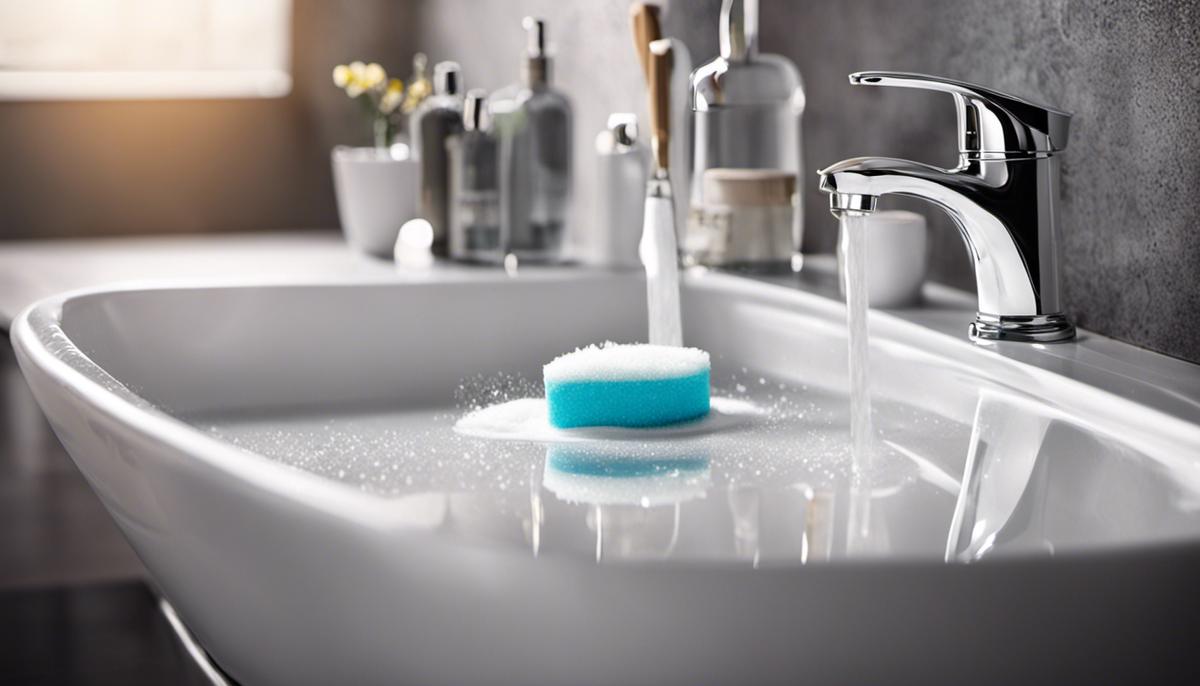
Potent Maintenance Practices
New Practices To Incorporate To Keep Your Sink Pristine
People who love a sparkling clean sink know about the stain-fighting power of our kitchen heroes – baking soda and white vinegar, not forgetting the effect of a good scrub with a towel. However, to keep our homes looking their best requires preventative measures and consistent upkeep. This way, we do not have to pull out the baking soda and white vinegar too often! It’s easier to prevent stains than to fight them. Here are some great practices to incorporate into your routine.
-
First, always rinse the sink after use. This measure seems simple, yet it has a significant impact on protecting the sink. Dish soap and dishwater can leave residues that, if not cleaned, can lead to unwanted spots staining your sink. Therefore, it’s essential to always rinse off any remains in the sink after every use.
-
Next, drying the sink goes hand-in-hand with rinsing it. Water spots and mineral deposits can form when droplets of water dry on the sink’s surface. Hence, it’s a good practice to leave the sink dry. Consider using a separate dry towel designated for your sink or even a squeegee to remove any excess water.
-
Also, remember to clean your sink drains. It’s easy to focus only on what we can see on the surface and let what’s underneath sneak up on us. It’s common for grease and food particles to accumulate, leading to a smelly drain and, worse, a stained sink! Use a mixture of hot water and dish soap or vinegar to flush your drain regularly.
-
Moreover, you can prevent the nullification of acidic or colorful food and drink items. If you’ve ever worked with beetroot, you know that a little splash can lead to a lot of stains! Avoid letting these food items stay in your sink for more extended periods, and remember to thoroughly rinse and dry after washing these items. It’s not only beneficial for your sink but your cutting boards and utensils, too!
-
Don’t overlook the use of protective mats or grids. Using them keeps dirty dishes off the sink surface, reducing the risk of staining your sink. It also helps to prevent scratches that can become stains over time.
-
Lastly, schedule regular deep cleaning and maintenance. While it doesn’t need to be as rigorous as getting rid of existing stains, a weekly refresh helps to keep the sink sparkling. This practice could involve using gentle scrubbing agents, lime scale removers, and polishing.
Remember, the secret to a sparkling clean, stain-free sink is proactive care. Rinsing, drying, protecting, and regular maintenance will go a long way to keeping it looking its best. Happy cleaning!
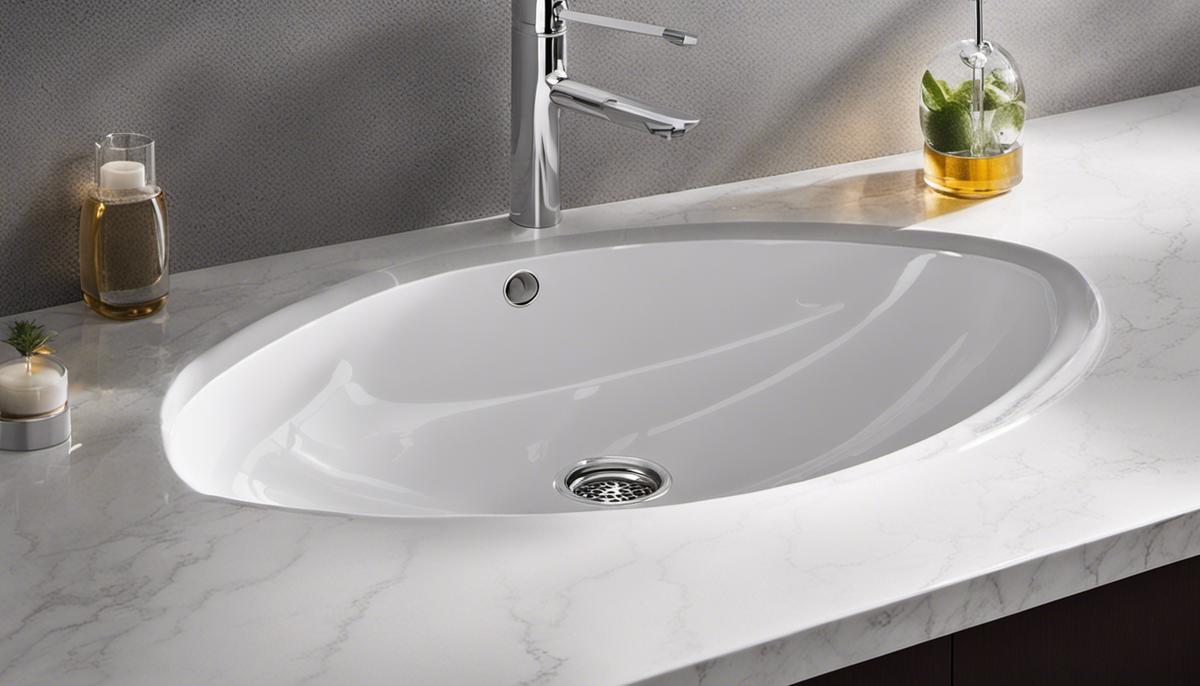
Armed with this insightful information on the various cleaning materials, their properties, specific application processes, and robust maintenance practices, you can now successfully combat not only the obvious, but also the hidden challenges that come with owning a white sink. Let your sink reflect the same attention to detail and hygiene that you champion in your home. Embrace these useful methods and evolve your cleaning routine for the better. By implementing these practices, you will surely enhance the longevity, cleanliness, and brilliance of your white sink, transforming it into an elegant feature that complements your home interior’s beauty.


